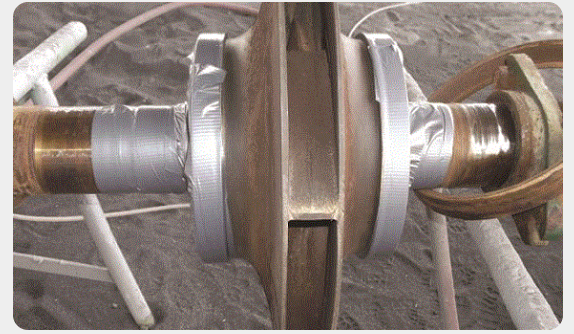Plasma spraying is a sophisticated thermal spray coating technique used to create top-tier coatings through a fusion of high temperature, intense energy heat source, a relatively inert spraying medium, and remarkable particle velocities.
A brief introduction to plasma spraying
Plasma spraying is a thermal spray coating process that uses a high-temperature plasma jet to melt and propel coating materials onto a substrate. The plasma jet is created by passing an electric current through a gas such as argon or nitrogen. The gas is heated to a very high temperature – typically around 10,000°C – and becomes ionized, meaning that the electrons have been stripped from the atoms. The ionized gas is then accelerated out of the torch nozzle at high velocity, carrying the coating materials with it.
The coating materials are typically in powder form but can also be in liquid or wire form. The powder is fed into the plasma jet through a feeder system, with the molten droplets of coating material impacting the substrate and solidifying to form a coating. You can obtain more information on the thermal plasma spray process from specialists such as poeton.co.uk/advanced-treatments/apticote-800-thermal-plasma-spray.
Advantages of plasma spraying
The primary advantage of using a plasma spray coating method lies in its versatility. This allows for the spraying of an extensive selection of materials, from ceramics to metals, onto both large and small components. This technique delivers an array of benefits, including:
Protection against corrosion
Resistance to wear, heat and oxidation
Regulation of temperature
Conductivity and resistance of electricity
What is plasma spraying used for?
Due to its adaptability, using plasma spray emerges as a preferred choice among technologists. Offering an extensive assortment of coating materials, notable applications include:
Spraying tungsten carbide/cobalt seal ring grooves and fretting wear in gas turbines.
Protection against high temperatures, as seen in the application of thermal barrier coatings onto gas turbine combustion hardware.
Wear resistance by depositing chrome oxide ceramics onto printing rolls for laser engraving.
Anti-galling measures, including the application of molybdenum alloys onto diesel engine piston rings.
Erosion and abrasion resistance and corrosion protection in the oil and gas industry.





Leave a Reply